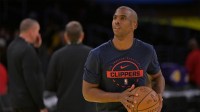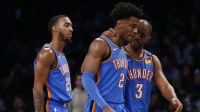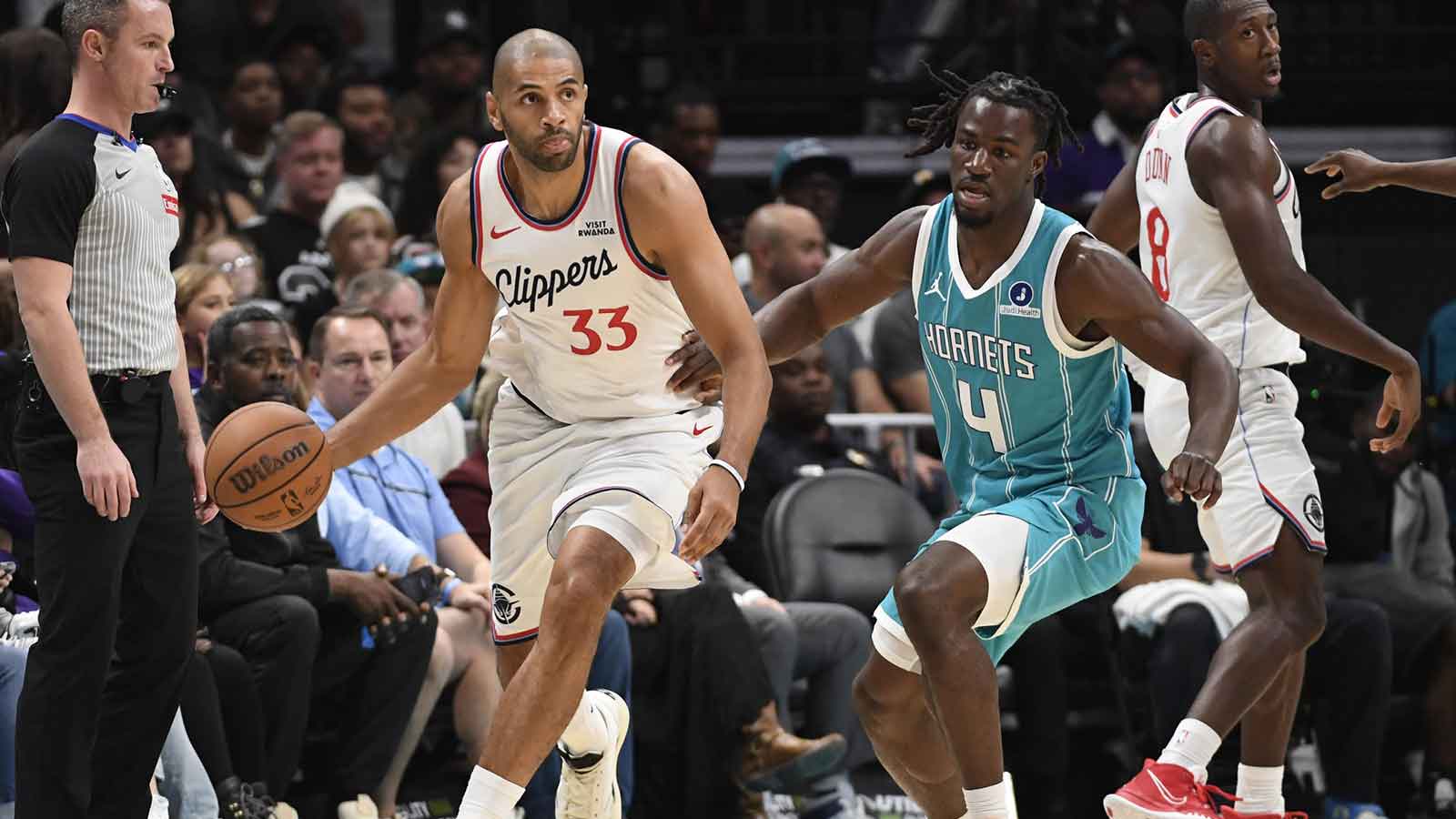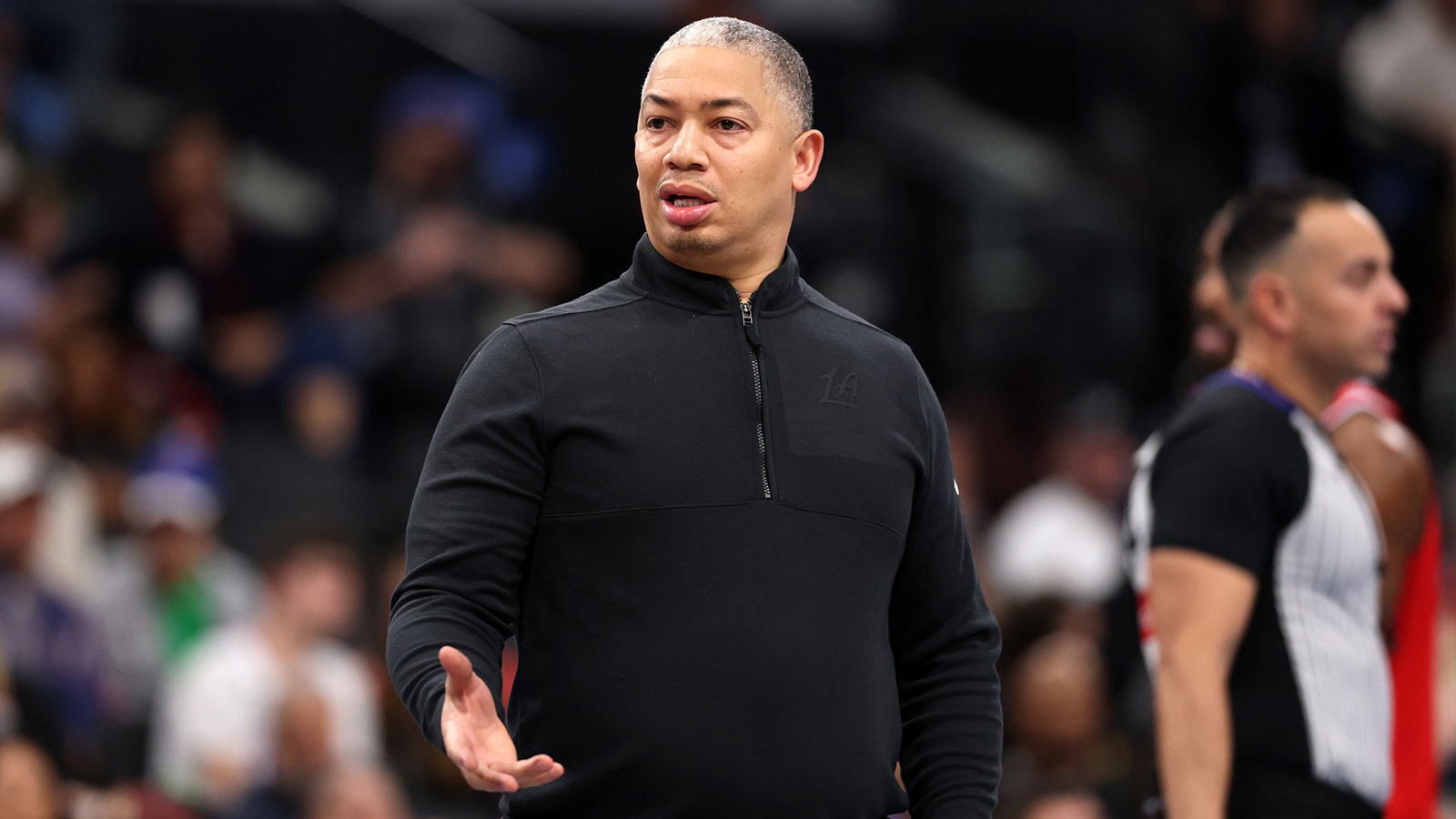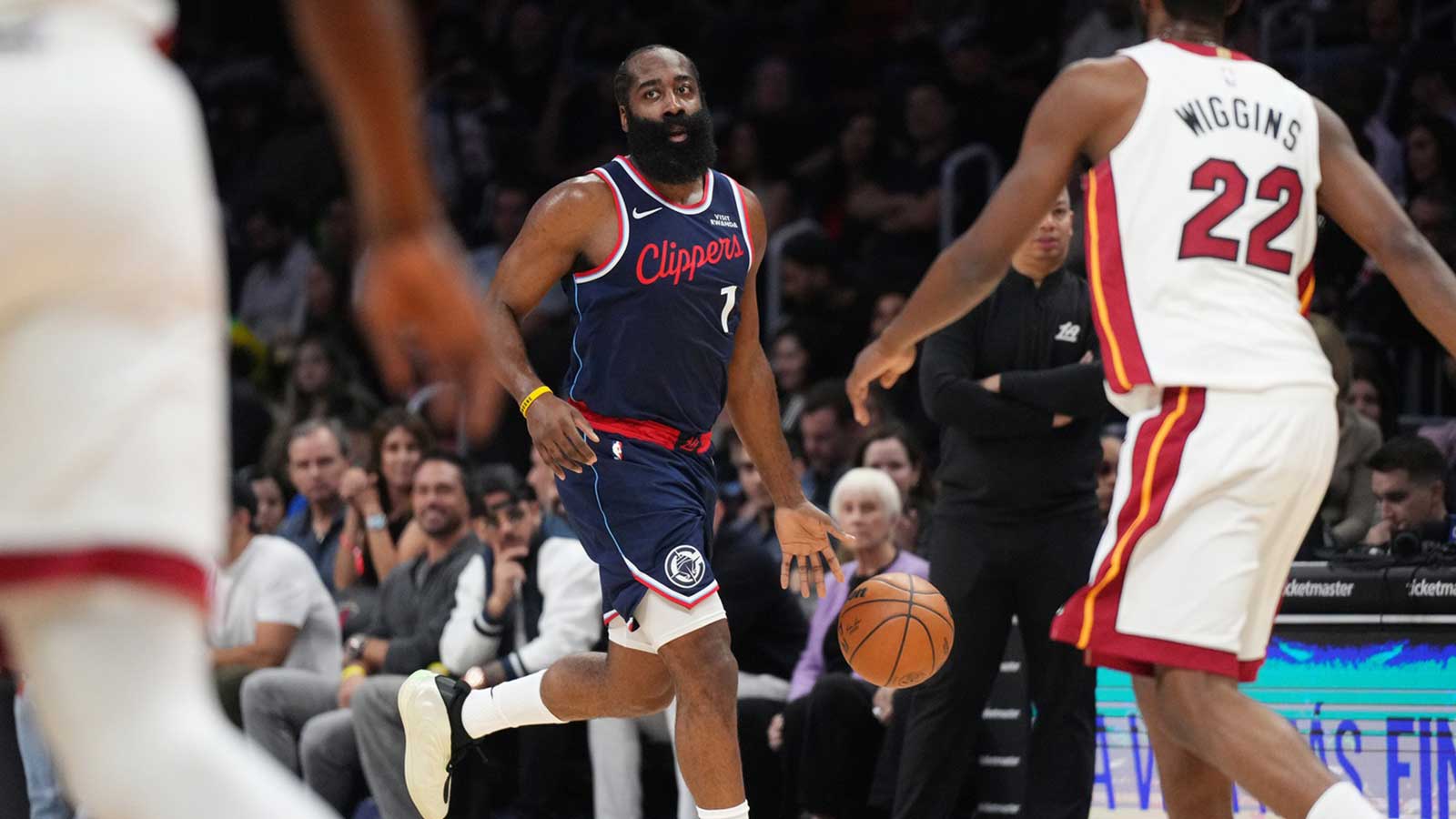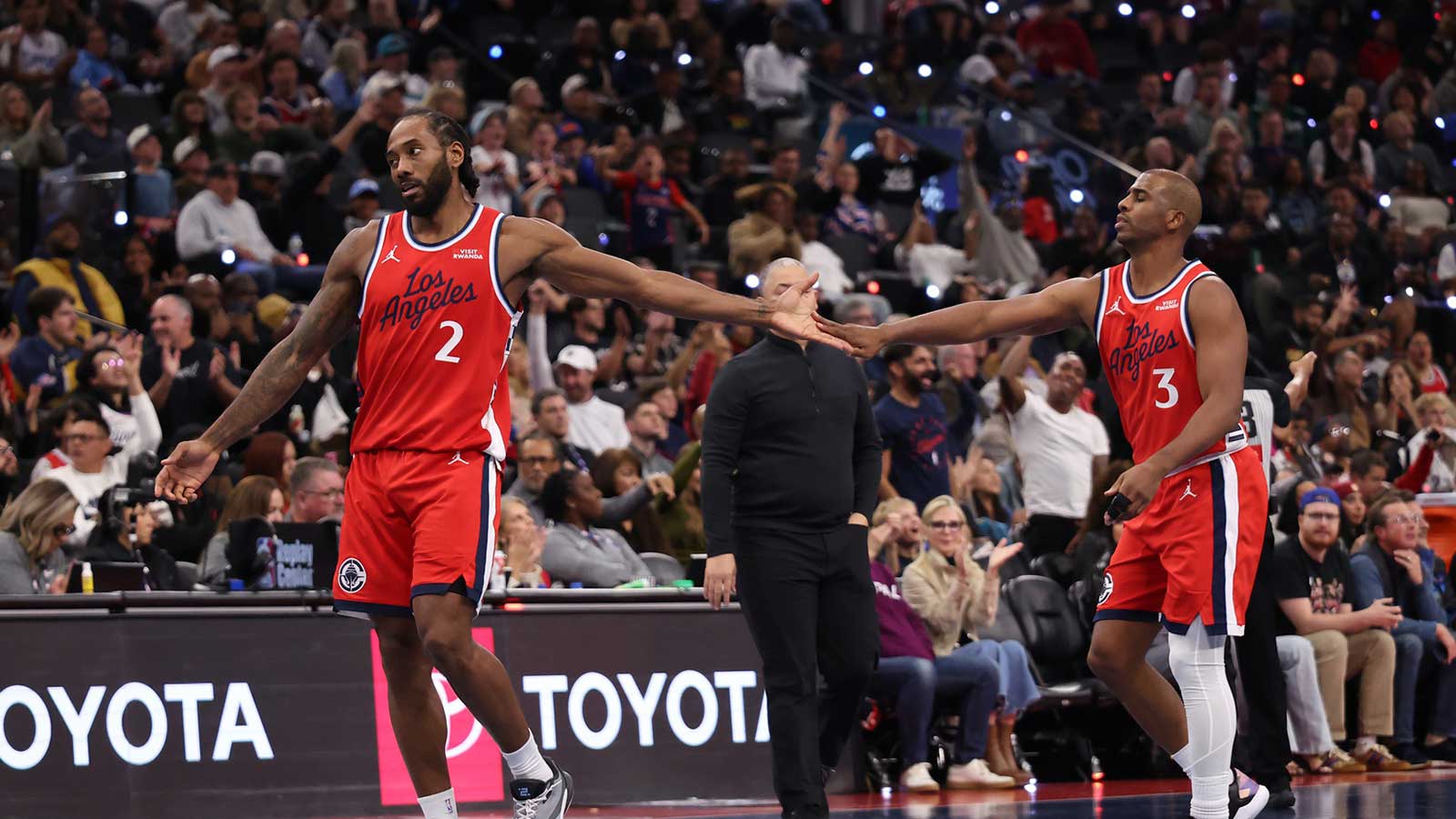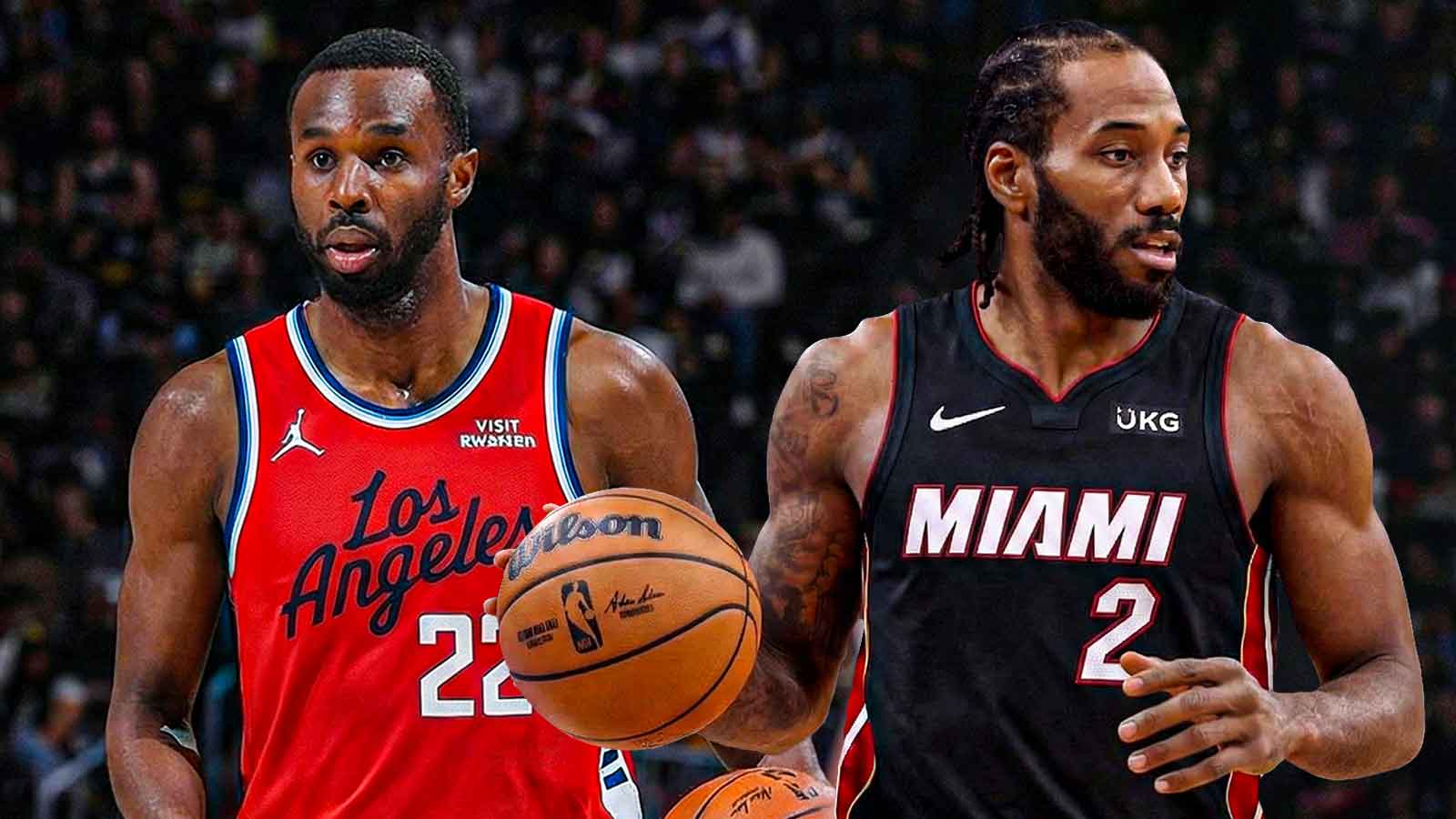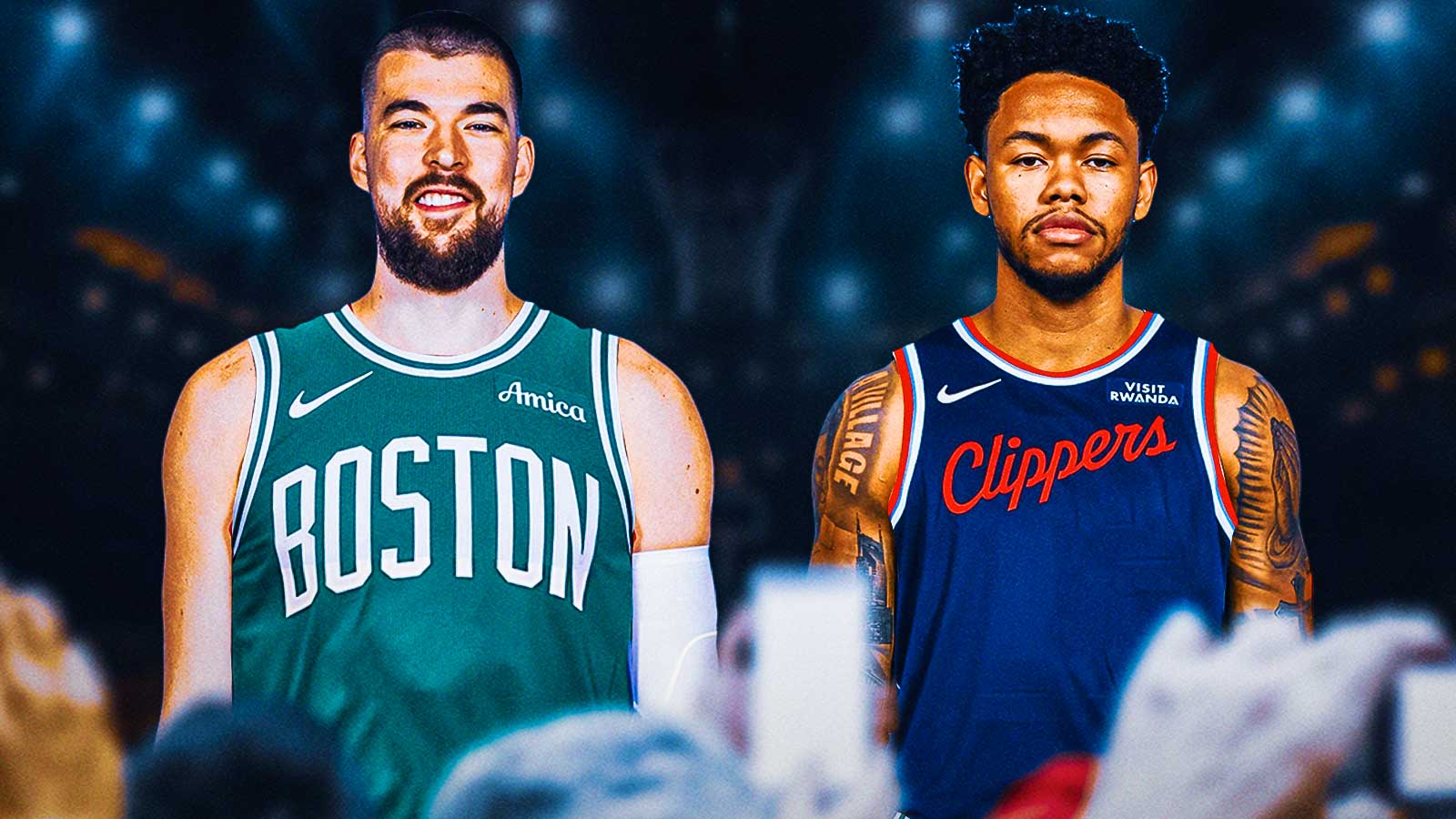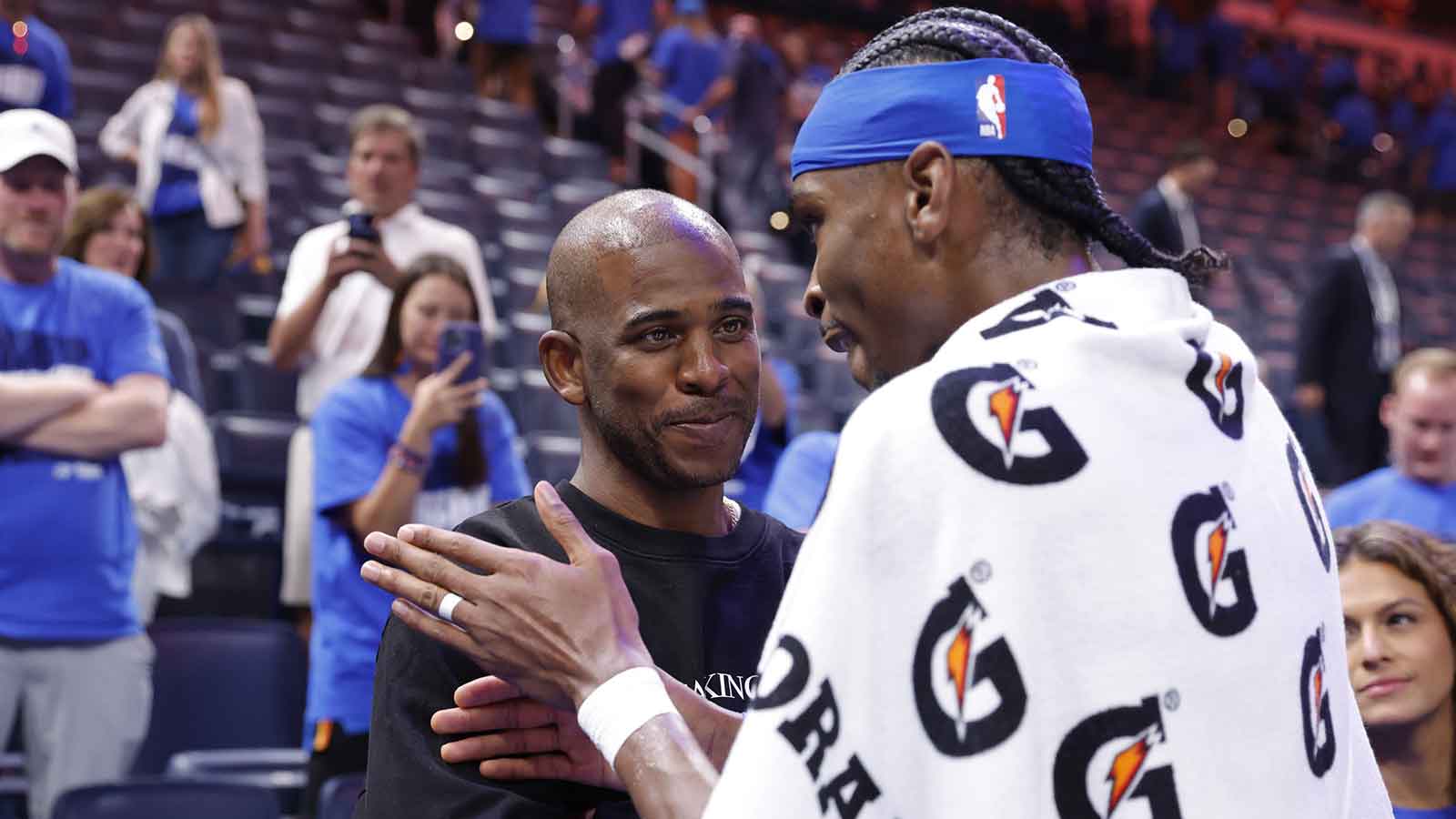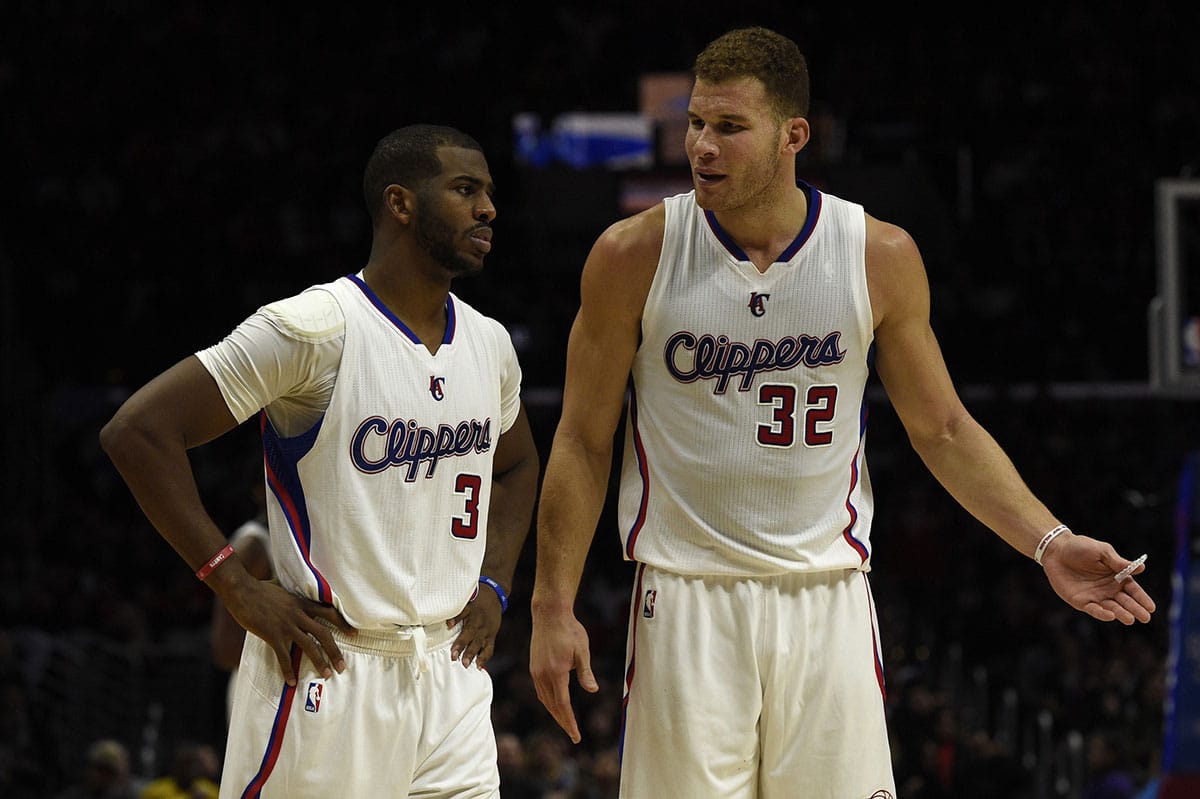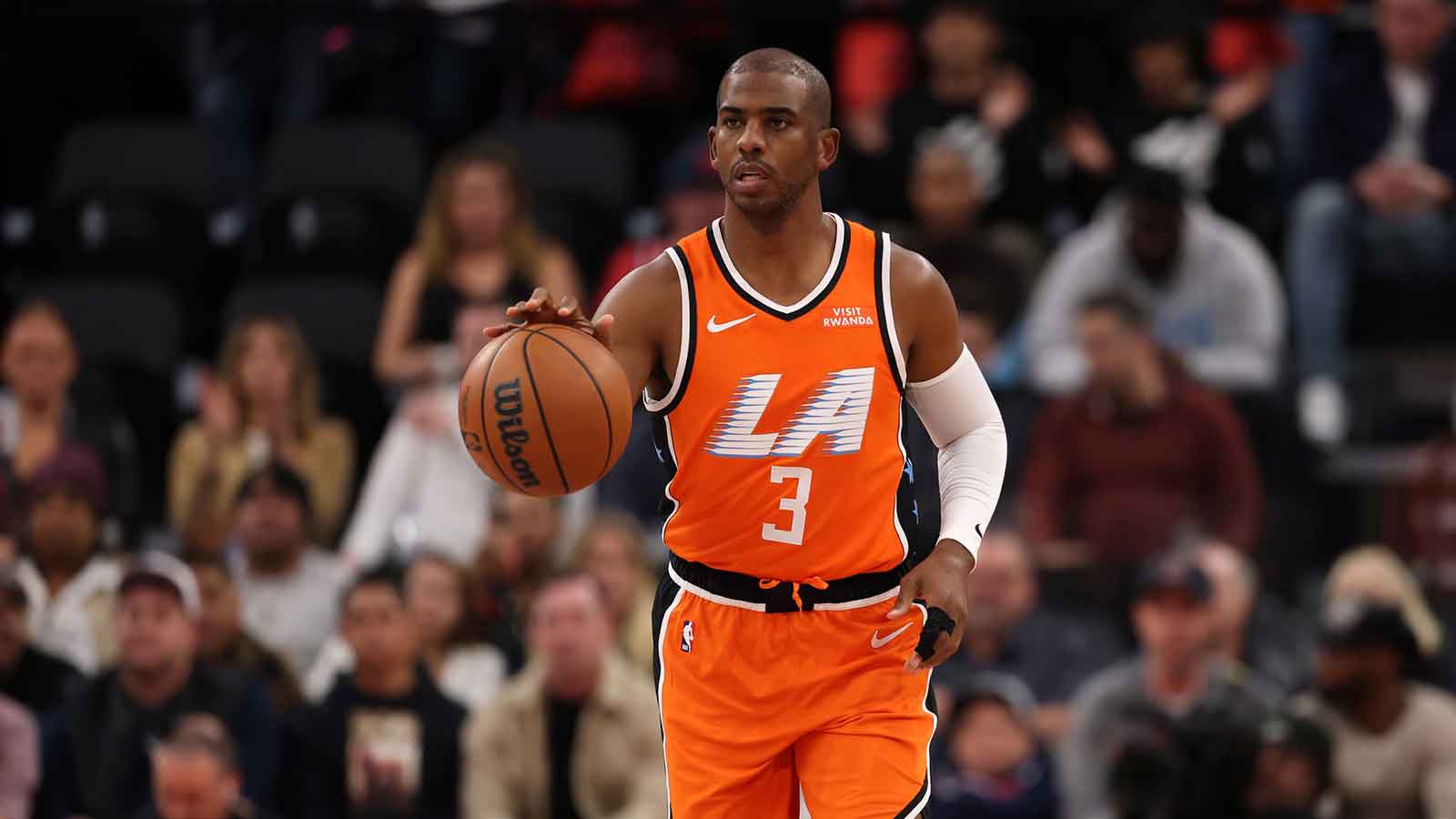As LA Clippers‘ star Paul George played the last month of the season injury-free, it appeared the team started to find its footing in the Western Conference again. If they're going to continue their strong play during a crucial stretch of the season these next few weeks, they'll have to do it with a limited George.
Following Thursday's loss to the Denver Nuggets, George revealed that the bone edema in his right foot has returned.
“It's better,” George said postgame. “It's a day-to-day process but I’m doing better. It flared up again.”
In trying to read George's expression and mood during the interview, ‘frustrated' and ‘worn down' are the two words that immediately came to mind.
The seven time All-Star initially missed seven games for the Clippers from Feb. 5-17 while dealing with the bone edema in his right toe. He was given no timetable to return, but 14 days later, George was able to return against the Utah Jazz on the second leg of a back-to-back. George played in every game over the next month and a half except for one due to dizziness, including a pair of back-to-back sets.
George adds that with no end to the situation in sight, the team is exploring different options that'll allow him to keep playing while managing it.
“We're trying to figure it out now,” Paul George explained. “Honestly, we’re trying to get on top of it now. Hasn’t seemed to go away yet. But at this point it is just managing the soreness and swelling. You play through what you can and what you can’t, you got to be smart about. If it was my way I wish I could be on the court and play all the games. But some days it is more sore than others and so you look ahead and plan ahead.

“It's just figuring it out. It's really no pop on the right foot. I can't really bend my toe or have it flexing all the way on that second toe. It's just figuring it out. I gotta figure it out. Most importantly, if I can play, and play with minimal pain, that's what I'm going for. We gotta figure it out, though.”
The term ‘bone edema' is one that I'd personally never heard of prior to last season, when Chicago Bulls forward Otto Porter Jr. and Boston Celtics center Robert Williams III dealt with the issues. Each case, however, yielded different results. Porter was out for a few months as he dealt with edema in his foot while Williams missed a few weeks with the issue in his back.
In order to get a better understanding of George's bone edema injury, what it means, how to manage it, and how to heal from it, I spoke to Dr. Rajpal Brar of 3cbPerformance, who works with athletes on physical therapy.
Tomer Azarly: First off, what is a bone edema injury?
Dr. Brar: When you have bone edema, edema means swelling essentially, and it’s his second toe. Typically what this sounds like to me — of course I don’t have all the information on it — there’s the spectrum called the bone stress injury spectrum. One side, you have early-on, way prior to a stress fracture, you have what’s called a stress reaction, and that’s when you’re starting to see that bone become overloaded and it starts to develop this swelling — this edema — around it. So the concern is if you let that linger and keep going, it’d turn into then a stress fracture and the second and third toes are the most common sites for stress fractures in the foot, so that lines up with that just based on prevalence.
It sounds like what happened is they saw this… Typically what happens is when I see a bone stress injury, the first thing you do is you wanna see and assess how far it is on that spectrum and then typically you will try to decrease the amount of load the player has. In this case 7 games, and then you reassess and you try to manage it. Essentially it sounds like what happened is they saw this edema, they realized, ‘hey okay, it’s not that far along, we can try to just reduce his load in the short term and then let's see how he respond over time. So I’m guessing even when he was playing, he was still feeling it, but now it's at the point where it’s come back, he’s starting to overload it a little bit, so again, they have to pull back on the range.
Tomer Azarly: What's the best way to manage this bone edema injury Paul George is dealing with?
Dr. Brar: You’re gonna hate the word, but it’s load management.
Tomer Azarly: Haha. Of course it is.
Dr. Brar: I almost think about it like this idea where if you have this bucket and drops of water are going into the bucket — this is how I see load management — you don’t want it to overflow, and so when you stop the player from activity, you’re allowing the bucket to kind of decrease, and as he plays again, that bucket’s filling with water. So it’s finding that right balance for him and I think that’s why they’re saying it’s gonna be this ongoing process of activity versus rest. The hard part in these is why is it happening in the first place? I think one factor is that these guys have played a ton of basketball since the restart and so that’s one factor with relatively minimal rest. There could be something with him mechanically where he’s loading that toe.
The question becomes, in season you have to manage it because you have to balance that load versus activity, and you have to assess, okay, is he getting to the point where we’re not comfortable or he’s not comfortable playing or he’s having pain and it’s affecting his function and where are we seeing it on the MRI? Is it trending towards that stress fracture, is it holding still? And then something we kind of manage during the season and allow him to rest, so it’s that push and pull again. That’s why I mention Kawhi with his knee. It’s that push and pull of having to balance this idea of load and inactivity. The key issue with Paul George is we just don’t know why it’s happening. I don’t know if they do or not, but they certainly haven’t said anything to that regard.
Tomer Azarly: So it simply comes down to rest?
Dr. Brar: Initially, it’s rest. With a bone stress injury, it’s putting too much load through that specific point of the foot that it can handle, so there’s a reaction. You have to give it enough rest for it to heal and then build it back up. The problem is when you’re in season, you don’t have that kind of time. And that’s really the concern. My guess is that they’re to manage it to the offseason and then they’ll give him enough time to allow that bone to actually heal and then they will address it in full.
"It's just figuring it out. It's really no pop on the right foot. I can't really bend my toe & have it flexing all the way on that second toe. I gotta figure it out. If i can play, & play with minimal pain, that's what I'm going for. We gotta figure it out tho.”
– Paul George. pic.twitter.com/7R3XzIFHM7
— Tomer Azarly (@TomerAzarly) April 2, 2021
Tomer Azarly: When Paul George says he can’t flex his toe, do you believe that’s more of a pain tolerance thing?
Dr. Brar: I think it’s pain. My guess is that it’s painful and so that’s what’s not allowing him to really push. Because he’s saying push off of it, that’s gonna be a pain thing. If he really wanted to push off of it, he could, but it’s a matter of being able to tolerate that pain. My guess is anytime he loads that toe, whether its pushing off, whether it’s bending it, because its been overloaded, it’s been too stressed, it’s gonna have some kind of response.
Tomer Azarly: Lastly, can the structure of the playoffs, with no back-to-backs, sometimes two days off, help Paul George or the Clippers? Can it benefit them extra in any way?
Dr. Brar: Well, I mean, one day on, one day off, maybe. The two days off, sure. That’s the other thing to talk about. This season you have a congested schedule so you have guys playing more games over less time which would then lead to more load, overloading that side, but in the playoffs, since there is more of a gap schedule, yeah, I would say it’s gonna be beneficial.
It sounds like both Paul George and the Clippers are going to have to manage this bone edema injury for the rest of the season. There may be times in the very near future where it’s better to rest him, especially as the team gears up for its playoff run


